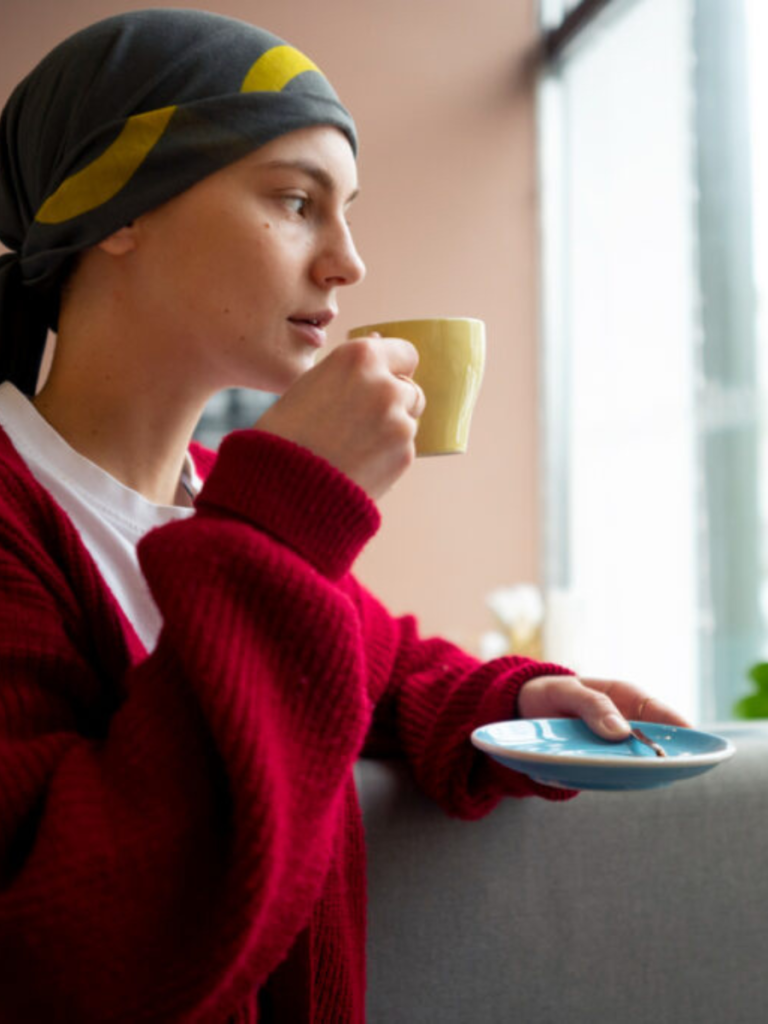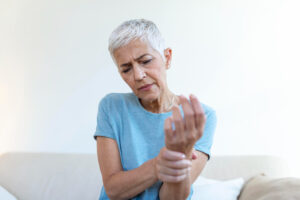Arthritis: Know Big Side Effects Of Chemotherapy For Breast Cancer

When you think of joint pain, arthritis might come to mind first and you cannot imagine it is one of the side effects of chemotherapy for Breast Cancer. However, joint pain can stem from other causes, including cancer treatment. For instance, postmenopausal women with breast cancer who use hormone therapy drugs called aromatase inhibitors may experience joint pain as a side effect.
Research indicates that up to 70% of patients develop arthritis symptoms following certain chemotherapy treatments. This blog discusses why arthritis may occur after chemotherapy and the importance of awareness.
Chemotherapy, crucial for treating breast cancer, can sometimes lead to arthritis, causing pain and stiffness for many survivors. This side effect can make daily tasks difficult. Recognizing these symptoms early is key to managing them and improving quality of life post-treatment.
What is Arthritis?
Arthritis is a condition that causes inflammation and pain in the joints, leading to stiffness and reduced mobility. It can result from various factors, including age, injury, and autoimmune disorders. For many breast cancer survivors, side effects of chemo can trigger the development of arthritis, adding another layer of challenge to their recovery process.
Types of Arthritis
- Osteoarthritis (OA): This happens when the cartilage in your joints gradually wears away.
- Rheumatoid Arthritis (RA): This is a condition where the body’s immune system mistakenly attacks its tissues, including the joints.
- Psoriatic Arthritis: This arthritis affects some people who have the skin condition psoriasis. It causes joint pain, swelling, and skin flare-ups.
- Gout: A form of arthritis characterized by sudden, severe attacks of pain, redness, and tenderness in joints, often starting with the big toe, caused by excess uric acid forming crystals in the joints.
- Ankylosing Spondylitis: Ankylosing Spondylitis is a type of arthritis that mainly affects the spine, causing inflammation and pain. Over time, it can lead to the fusion of the vertebrae, resulting in a rigid and less flexible spine.
Symptoms
- Swelling or stiffness in the joints
- Tenderness and Joint Pain after chemo
- Decreased ability to move the joints
- Warmth and redness in the affected area
Chemotherapy for Breast Cancer
Breast cancer is a major health issue globally, and while chemotherapy is an effective treatment, it comes with side effects. Chemotherapy drugs are used to kill cancer cells but can also harm healthy cells, leading to issues like joint pain and arthritis. Talk about your symptoms for immediate diagnosis and treatment with Orthopedic doctor Dr Preetesh Choudhary now!
Commonly used medications include:
- Cyclophosphamide: Helps slow the growth of cancer cells.
- Doxorubicin (Adriamycin): Targets the DNA inside cancer cells to stop them from multiplying.
- Methotrexate: Blocks the growth of cancer cells by affecting certain cell functions.
These drugs can be used alone or together, depending on the type and stage of breast cancer, to make them work better against the disease.
Aromatase inhibitors like letrozole (Femara®), anastrozole (Arimidex®), and exemestane (Aromasin®) are commonly used to treat hormone-receptor positive breast cancer.
Who uses aromatase inhibitors?
Aromatase inhibitors are taken by women with hormone-receptor positive breast cancer. These cancers have receptors that estrogen or progesterone can attach to, stimulating cancer growth. After menopause, when ovaries stop producing estrogen, an enzyme called aromatase can still convert adrenal gland hormones into estrogen. Aromatase inhibitors block this enzyme, reducing estrogen levels in the body.
These inhibitors are used in two main situations: first, after surgery for a specific-sized breast cancer tumor to prevent its return over 5-10 years; and second, as initial treatment for women whose hormone-positive breast cancer has spread.
The big drawback is joint pain after chemo
Although aromatase inhibitors work well, they can cause side effects. Research shows that 25% to 50% of women using these drugs may feel muscle discomfort or joint pain after chemo .
These symptoms can affect various joints like fingers, wrists, elbows, shoulders, knees, and ankles. Some women stop taking the medication early due to these joint issues, even before completing the recommended five-year course.
Factors which Contribute to Arthritis Post Chemotherapy
Several factors can lead to arthritis after chemotherapy for breast cancer:
- Inflammatory Response: Chemotherapy can cause inflammation in the body, which might lead to arthritis.
- Hormonal Changes: Breast cancer treatment often includes hormone therapy, which can affect joint health.
- Pre-existing Conditions: People with a history of joint problems may be more likely to develop arthritis after chemotherapy.
Managing Arthritis Symptoms Post-Chemotherapy
Lifestyle Changes:
- Eat Well: Follow a balanced diet rich in fruits, vegetables, and fish to help reduce inflammation and joint pain.
- Stay Active: Engage in gentle exercises like swimming, walking, or yoga to strengthen muscles and improve joint health.
- Watch Your Weight: Maintaining a healthy weight reduces pressure on your joints, helping to ease pain.
Medical Treatments
- Pain Relieving Medicines: Your doctor might suggest other if your pain is more severe.
- Physical Therapy: Seeing a therapist can assist in improving your movement and easing discomfort. They will guide you through exercises in order to reduce the joint pain.
- Sometimes, acupuncture or massage also can help with the pain.
Closure
We’ve talked about how arthritis can develop after chemotherapy for breast cancer, including its causes and symptoms. Chemotherapy targets fast-growing cancer cells but can also impact other cells, leading to arthritis symptoms like joint pain, stiffness, and swelling. To manage these symptoms, it helps to eat a balanced diet, do low-impact exercises, maintain a healthy weight and visit an orthopedic clinic. Additionally, treatments like pain relievers and physical therapy can provide relief.









